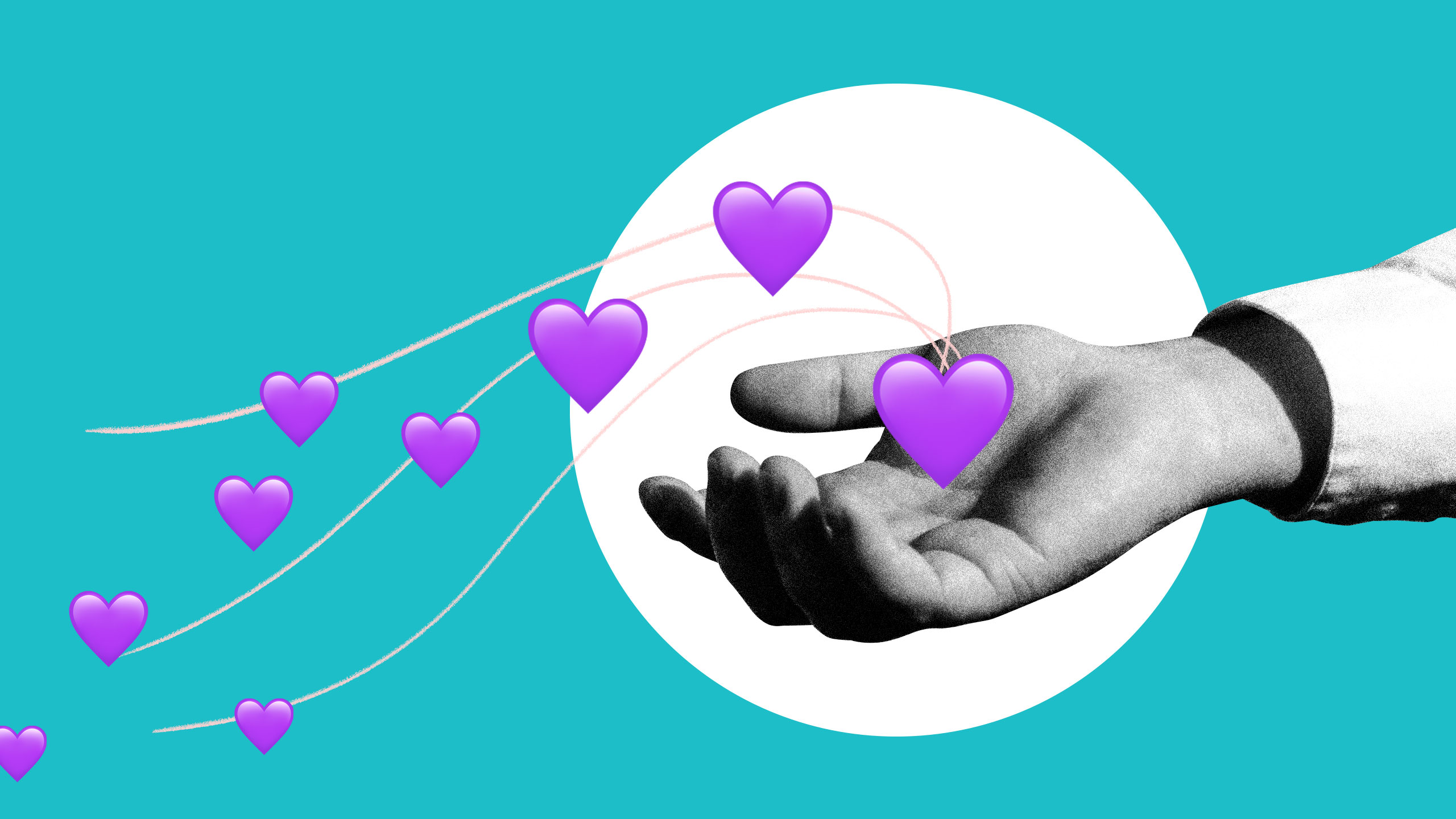A note to readers: the following story deals with suicide. If you or someone you know needs help, you can call the Crisis Services Canada hotline at 1-833-456-4566 or 1-866-277-3553 for residents in Quebec. More resources are included at the end of this article.
I entered Toronto’s first COVID-19 lockdown with an advantage: my prior experience living with mental illness meant I’d already developed tools to cope with stress and isolation. Although I felt strained like everyone else, I also felt relief. I had been ignoring my mental health needs to meet the demands of work, school and life in general; because of the pandemic, I lost my job and the possibility to see my family, but I gained time to rest and care for myself.
But for a lot of people, the pandemic activated mental health problems they’d never experienced before, or problems they felt they’d already learned to manage—and we all struggled to cope in isolation.
LGBTQ2S+ folks were particularly hard-hit. According to the Kaiser Family Foundation, 49 percent of non-LGBTQ2S+ people in the United States said the pandemic impacted their mental health, while nearly 75 percent of LGBTQ2S+ populations reported the same. The Trevor Project’s National Survey on LGBTQ Youth Mental Health also presents alarming statistics: it shows that 80 percent of LGBTQ youth across the U.S. faced a “more stressful” living situation during COVID-19, and 42 percent seriously considered suicide last year.
“When everyone is floundering, looking out for each other’s mental health becomes a daunting task.”
Pandemic strain was compounded by the additional barriers LGBTQ2S+ folks face, including greater job instability, worse health insurance coverage, loss of crucial community connections and greater housing instability (many LGBTQ2S+ youth were forced to live with unsupportive or abusive families during the lockdowns).
While these barriers predate the pandemic, the ways in which we could be there for each other became harder than in a typical year. Virtual socializing is difficult to begin with, and when everyone is floundering, looking out for each other’s mental health becomes a daunting task. Checking in on others virtually certainly felt daunting to me. A feature of my mental illness, some days I can’t even muster the energy to send a text—so while I’m not great at being consistent with phone call check-ins, I have learned to be creative and find alternative modes of communication. My favourite is sending and receiving voice messages via WhatsApp because you have the benefit of hearing someone’s voice without a time-pressured response.
Keith Dobson, a clinical psychologist, professor at the University of Calgary and an expert researcher for the Mental Health Commission of Canada (MHCC), says that, while difficult, caring for each other from afar is possible. “I think that the media has made a mistake by confusing the issue of physical distancing with social distancing,” Dobson says. “People are social animals, and we need other people around. We absolutely have to make social contacts, whether that’s by phone or internet or talking to people over the back fence.”
While you may not be able to radically change the pandemic, politics, systemic barriers and racialized and transphobic violence driving LGBTQ2S+ youth’s mental health distress single-handedly, you can create a supportive and safe space for your LGBTQ2S+ loved ones—virtually or physically. Here are some tips on how to support people experiencing mental health problems when you can’t be there in person.
Know the signs of worsening mental health
Symptoms are different for everyone, but some common ones include: feeling sad, isolated, lonely or empty; withdrawing from usual activities; changes to routine; sleep disturbances; excessive substance use; increased agitation, irritability and anger; and a disheveled physical appearance. Mental health issues often present in physical conditions like chronic pain, backaches, headaches and digestive issues.
Pay attention to any changes to someone’s usual mood and behaviour. “Everybody has what is considered their ‘baseline,’” says Denise Waligora, the training and delivery Specialist for MHCC’s Mental Health First Aid courses. “There’s always a reason for change in behaviour.” Try to notice what someone says and how, but also when—if they respond to you at odd hours, it may be a good idea to follow up by asking if they are having trouble sleeping or experiencing more stress at night.
Don’t try to solve the problem
When you reach out offering support, be approachable and create a safe space. When someone opens up to you about mental health problems, don’t try to fix them or immediately make the negative emotions stop (you can’t). “It’s important to share information and give messages of hope,” Waligora says. “It’s not about telling somebody what to do.” Instead, remind them that it’s impossible for any emotion or mood (good or bad) to last forever and they will experience relief from the intensity of whatever they are feeling. Let them know they are not alone, it’s okay to feel negative emotions and that help is available when they are ready.
Get the conversation started
It can be difficult to know how to begin talking about mental health. Dobson suggests beginning by asking questions. You can ask general questions like “How has your mood been lately?” or make specific observations like, “I noticed you’ve stopped attending our online fitness class” or “You were really quiet at the meeting yesterday.” Be non-judgemental and invite them to share however much or little they want.
“Start with an observation, express a concern, and if they deny it just simply be there next time you see the same thing, and point it out again,” Dobson suggests. “It shows you care, you have compassion, and you’re willing to talk about it.”
Show genuine interest by listening well and being non-judgemental. Remember that talking about someone else’s mental health problems is never about your feelings or making comparisons. Have conversations through whatever mode is most comfortable: some people prefer text or email because it feels safer than face-to-face conversations or talking over the phone; others are more articulate and open in writing than spoken words.
Help establish a routine
Routines give people a sense of stability that is helpful for regulating mental health. Dobson says everyone—caregivers and care receivers alike—should do their best to engage in a physical care routine. “Maintain your physical well-being as much as possible,” he says. “Maintain a standard sleep cycle, eat healthfully on a regular basis and get some kind of moderate physical exercise.” A physical care routine helps protect everyone from burnout and gives us the energy to deal with mental health issues when they arise. A mental wellness routine could include online or physically-distanced social connections (weekly classes, groups or games with friends), meditation, therapy, writing or pursuing creative hobbies. You can help someone by being part of their routine, doing things together virtually such as online fitness classes, watching a TV show, going for a walk via video call—or something brief like texting them reminders to take their medication. If you help someone establish a routine, following up to see how it’s going encourages accountability. Contacting them at the same time every day or week can help add regularity too—just be sure the frequency and duration of your conversations is not overwhelming to either party.
Think outside the [text] box
Serious conversations about mental health problems can be stressful and uncomfortable. Waligora suggests making these conversations less intimidating by doing an activity together, particularly when talking to youth. Here are some suggestions that you can do either physically distanced or via video call: play video games, exercise outdoors, go for takeout or ice cream or do groceries together. Isolation is common for someone experiencing mental health problems so encouraging them to have fun or engage with the world can be helpful.
Make a safety plan
“A safety plan is a collaborative approach between yourself and the person at risk on how to keep that person safe,” Waligora says. A safety plan lays out steps of what that person should do and who to contact in case of a mental health emergency. When helping someone create one, Waligora suggests asking them what was helpful in the past. It could be going for a walk, reading a book or talking to a friend or a professional. Include a list of people to contact, ranging from trusted friends to mental health professionals and crisis services. Additionally, if someone has difficulty recognizing their warning signs, it may help to organize a list that they can reference. If they struggle with memory, keeping track in this way can also help them prepare for a doctor, psychiatrist or therapy appointment.
“If you’re seeing warning signs like the person is talking about hating themselves or wishing it were over, or making obscure references to wanting to die or injure oneself, you should ask about that or take action,” Dobson says.
What’s next for mental health?
Dobson notes that while COVID-19 has prompted great conversations challenging the stigma of mental illness and highlighting the gaps in our mental health care system, he is concerned that as the pandemic eases people will feel pressure to be happy again and think they should not have or talk about mental health problems. He says that early in the pandemic, people dealt mainly with anxiety. “Now we’re seeing a much more complicated mental health situation with some anxiety about the future, but a lot more depression and a lot more anger about what’s already happened. People have experienced lots of loss,” Dobson says.
It’s critical we keep the conversation about mental illness going. Remember it’s okay to not be happy, even if you think you “should” be. Mental illness thrives in silence and isolation; stay socially connected. Keep checking in with your loved ones, keep being honest about how you are really doing and seek help whenever you need it.
Additional mental health resources
- Trans Lifeline
- Kids Help Phone
- LGBTQQ22SI Crisis Supports
- Trevor Project: Warning Signs of Suicide
- Suicide Prevention Hotline
- Distress Centres across Canada
- GTA Mobile Crisis Teams
- Mental Health First Aid Course


 Why you can trust Xtra
Why you can trust Xtra


